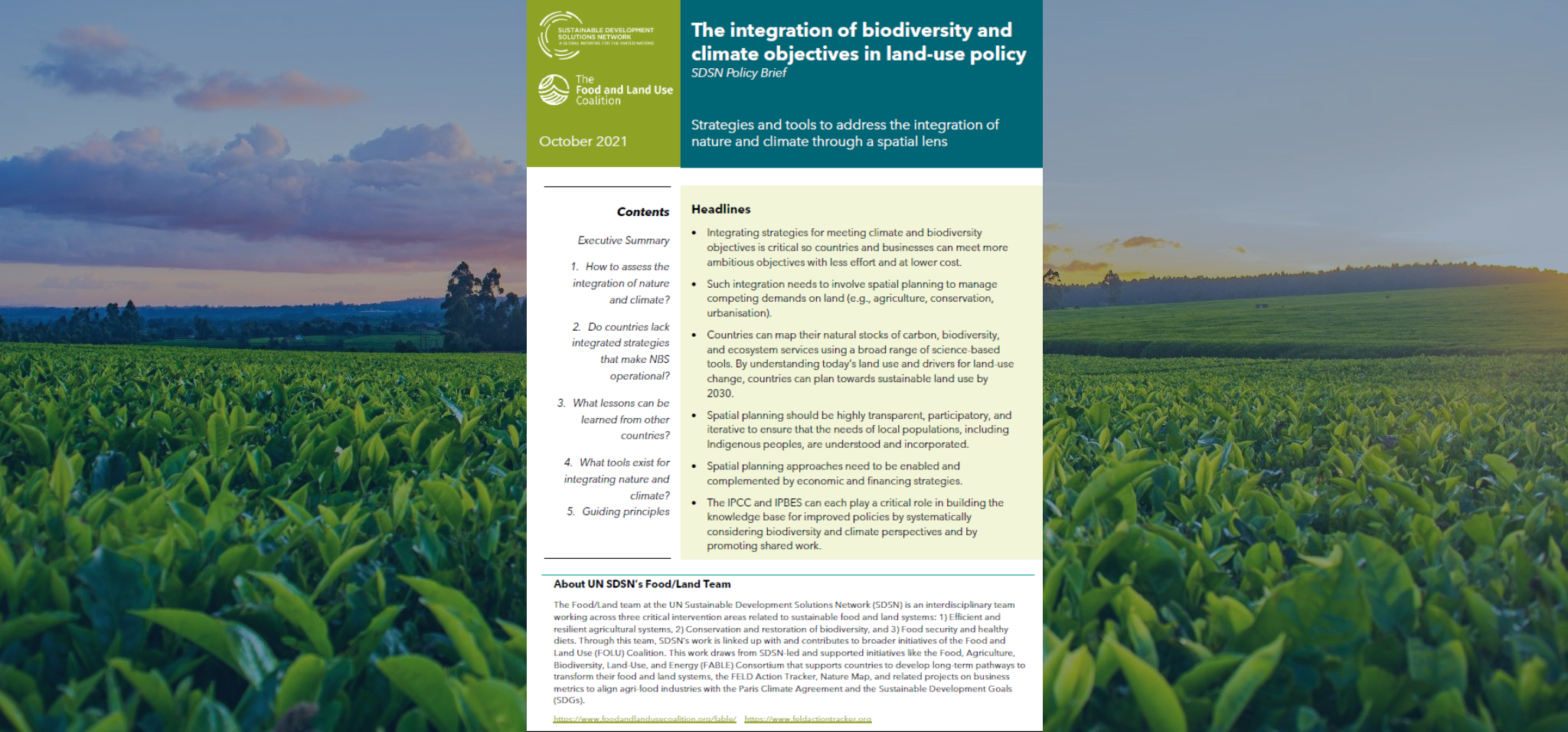
The impacts of climate change and biodiversity loss are two of the most important global challenges and risks to society as actions taken to mitigate climate change can have either beneficial or harmful effects on biodiversity. Nature based solutions (NBS) in support of climate and nature can contribute to the delivery of net zero greenhouse gas (GHG) commitments. Achieving net zero GHG emissions by 2050 will require major changes in the way countries manage the land, coast, and sea, alongside the decarbonisation of the energy, agriculture, land-use change and forestry sectors.
Countries will need to align ambitious targets and strategies, such as Nationally Determined Contributions (NDCs), coordinated with their long-term strategies and national biodiversity strategies.
To do this, countries need integrated long-term strategies and a spatial planning process that involves multiple experts as per Target 1 of the first draft of the Global Biodiversity Framework which calls for spatial planning. The inclusion of maps and spatial data in national climate strategies is not the only answer, but a necessary step in developing policies that can meet land-use objectives outlined in such maps at the national and local levels.
This brief includes an assessment of 111 updated or second NDCs, with no NDC containing actionable maps that underpin nature-based solutions and can guide policymaking. The brief also includes case studies of China and Costa Rica, both of which have developed comprehensive approaches to spatial planning where their experience might offer lessons for other countries.
The integration of biodiversity and climate objectives in land-use policy
The Food and Land team at SDSN launched a policy brief to present the case for the need to integrate nature and climate. The purpose of the brief is to outline practical steps for policymakers, particularly drawing on spatial planning, to operationalize the 30x30 target (conserving 30% of the Earth’s land and sea areas by 2030) and meet the objectives of the Paris Agreement and Sustainable Development Goals (SDGs).
The brief presents guiding principles to ensure effective integration of the climate and biodiversity agendas, which includes:
- Integrating climate and biodiversity objectives allows countries and businesses to meet more ambitious objectives with less effort and at a lower cost.
- Integrating the agendas requires spatial planning to manage competing demands on land (e.g., agriculture, conservation, infrastructure, etc.).
- By mapping a country’s natural stocks of carbon, biodiversity, and ecosystem services, countries can chart a course towards sustainable land use by 2030.
- Spatial planning processes should be transparent, participatory, and iterative, to ensure the needs of local and Indigenous peoples are understood and incorporated.
- To facilitate nature-based solutions at scale, national climate and biodiversity strategies under the UNFCCC and CBD should include maps of current and intended land use by 2030. China and Costa Rica are already pursuing these approaches, but are yet to be included in NDCs.
- Spatial planning processes need to be complemented by economic and financing strategies, including payments for ecosystem services, natural capital accounting, environmental tax reforms and more.
- The IPCC and IPBES can work together to build the knowledge base for improved policies.
For more information please contact info@unsdsn.org.